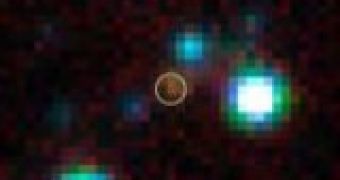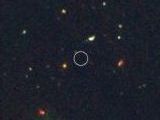The Milky Way usually spawns about four new stars every year, although the recent discovery of a new galaxy reveals that it is furiously creating a thousand times more stars than our own. Situated at more than 12 million light years away from Earth, the new galaxy appears as it looked 1.5 billion years after the Big Bang, thus providing us with an intriguing insight on how fast the galaxies and stars developed in the early life of the universe.
Dubbed GOODS 850-5, the galaxy creates about 4,000 new stars every year, which glow in bright infrared light due to the heated dust envelope that surrounds them. As light emitted by an object moving away from us travels through space it gets shifted farther towards the infrared spectrum. Due to this fact, the infrared light emitted by the dust clouds is now visible in the sub-millimeter radio spectrum, rendering the optical telescope useless in studying the stars hidden by the dust.
Instead, the Smithsonian Astrophysical Observatory's Submillimeter Array, or SMA for short, revealed that the dusty cloud of gas present in the far galaxy collapsed under the influence of gravity that leads to the formation of massive cores out of heavy elements, to create the early stars in the universe. This proves that before the star formation observed in the newly discovered galaxy a large number of massive stars must have been created in order to account for the high quantity of heavy elements ejected in the interstellar medium.
The rapid process observed in the GOODS 850-5 galaxy presents clear evidence that this must have been the way stars were created in the early stages of the universe. However, it dismisses the previous theory, which predicted that star populations formed in smaller less dusty galaxies after which they were merged together to form larger ones. It seems that large dust and gas structures dominated the universe, thus they must be the place where most of the stars formed.
Nevertheless, what surprised the astronomers most was the actual speed at which the stars in such early dusty galaxies where formed to produce the galactic structure. The discovery of this new galaxy means that other millimeter and sub-millimeter telescopes can now be used to look for other such bodies in order to determine the whole process that took place in the early stage of the universe's life.

 14 DAY TRIAL //
14 DAY TRIAL // 
